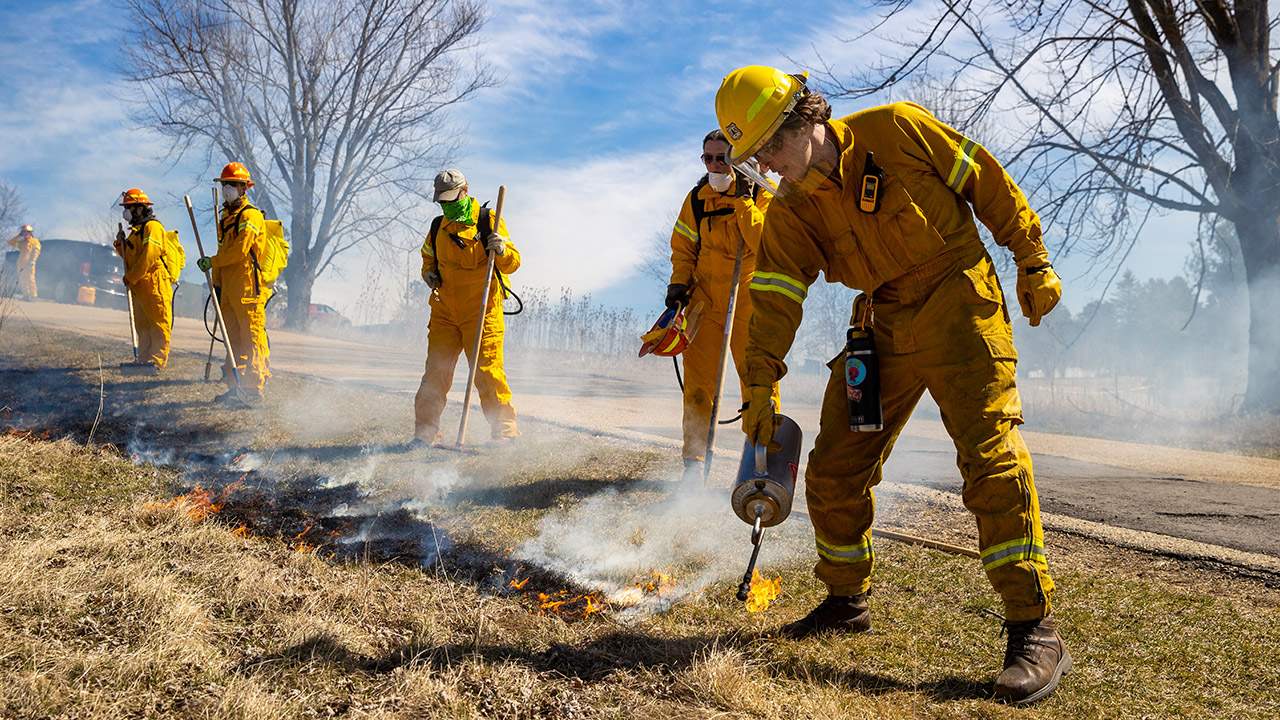
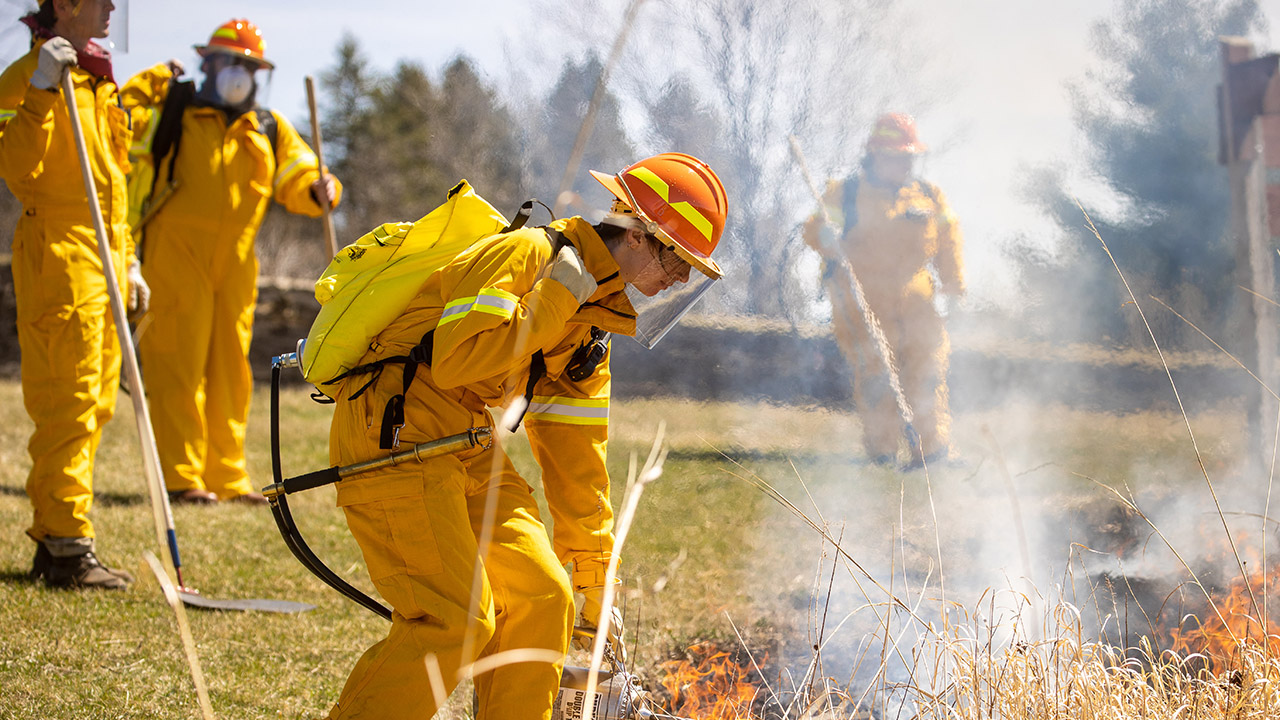
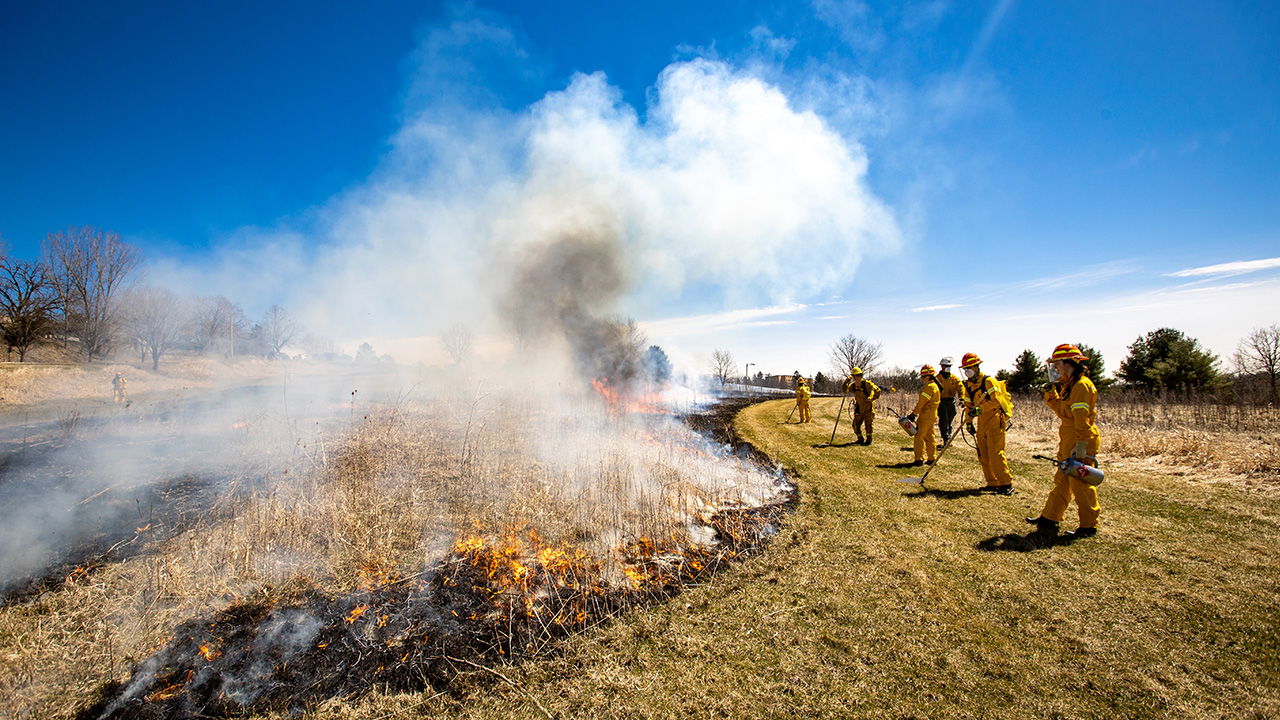
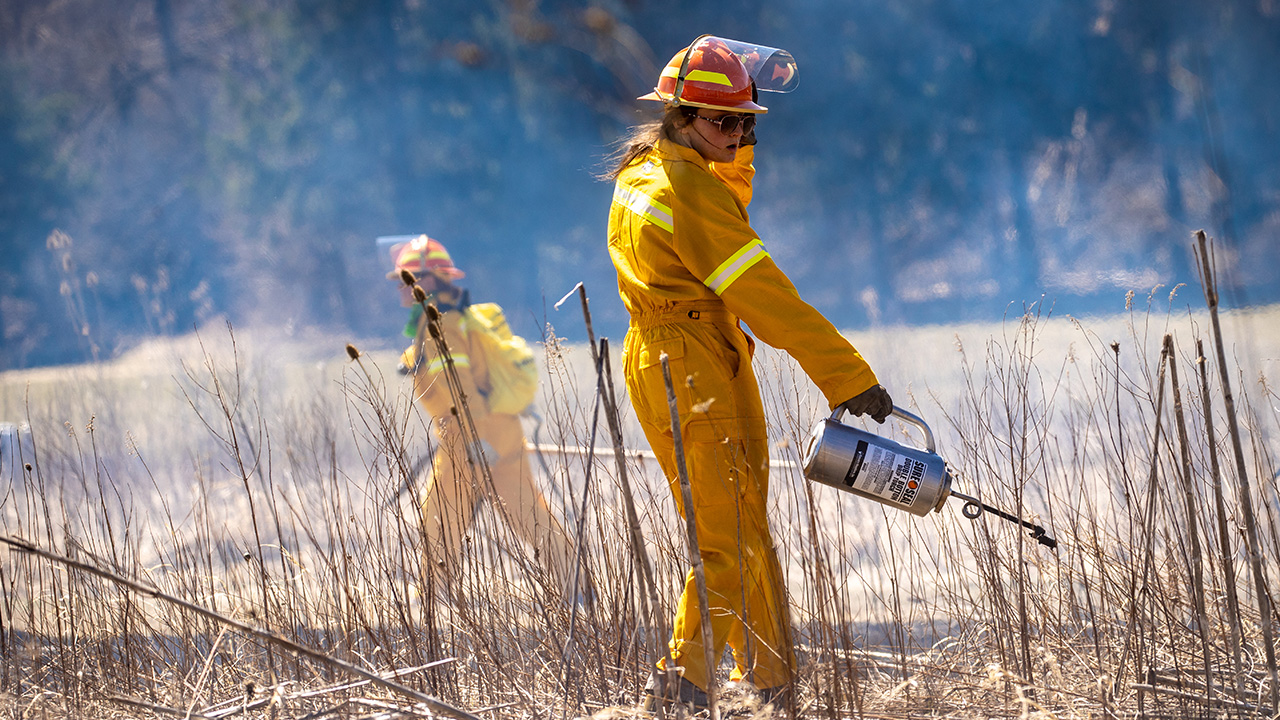
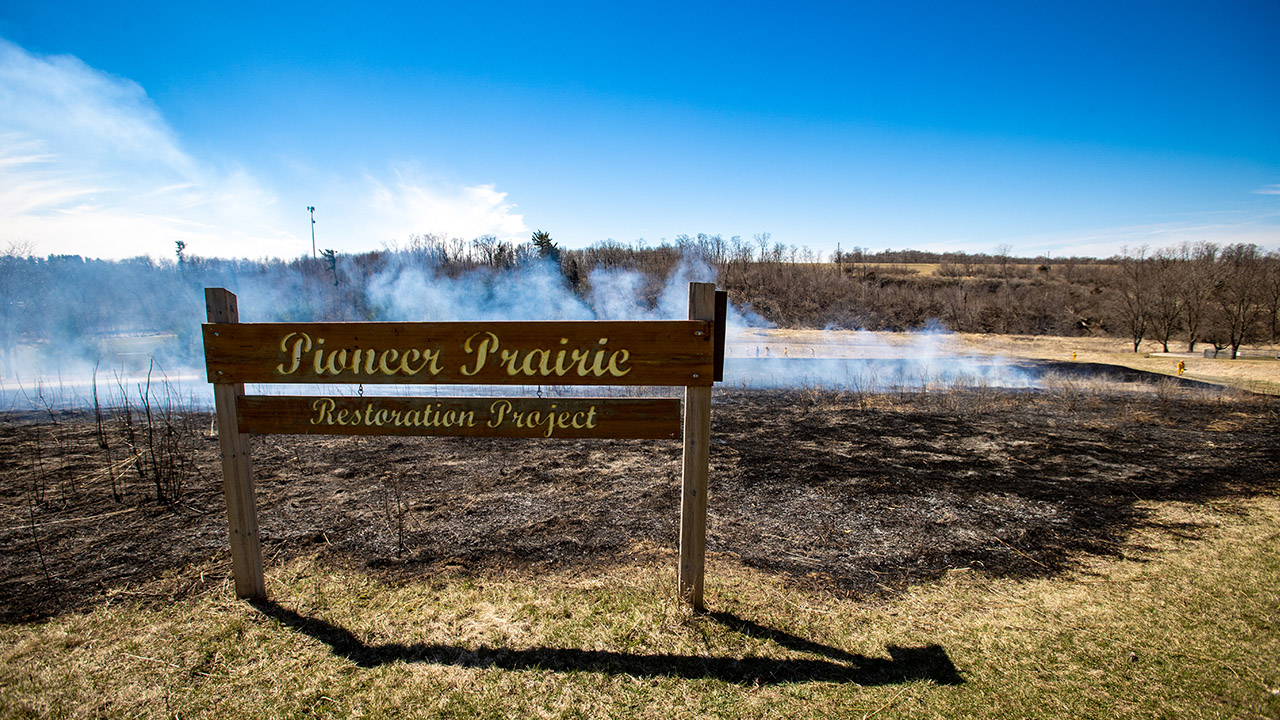
Just in time for Earth Day, University of Wisconsin-Platteville students had the opportunity to contribute to the stewardship of campus lands – an important part of the university’s commitment to sustainability. They did so by participating in prescribed burns across Memorial Park. Prescribed burns have played a varying role in the university’s land management plan for the past several decades, helping to keep campus prairies and savannas in good health by promoting growth of native plant species while clearing invasive species.
“Going back 500 or a thousand years, what we would see growing here, in the heart of the Driftless Area, would be this beautiful mosaic of prairies and oak savannas,” explained Dr. Evan Larson, professor of environmental sciences and society, who co-led the prescribed burns along with Dr. Christopher Baxter, professor of soil and crop science and coordinator of the Reclamation, Environment and Conservation program. “The way that you have prairies here is you have fires, and the way you have fires is either from lightning or people. What this means is that the stories of prairies, the land and people of the Driftless Area are all interwoven with the story of fire. We are working to expand awareness that fire is a vital ecological process that is really beneficial in a lot of places.”
The prescribed burns on campus achieve several objectives – one being to restore native habitat.
“Prairie and savanna habitats used to be widespread but are now some of the most diminished and at risk vegetation types in North America,” said Larson. “We have a beautiful campus, and are working to diversify and enrich these very important plant communities. It is exciting that we bring student experiences into this process.”
This spring’s prescribed burns focused on a dozen sites, including a section of Rountree Prairie in Memorial Park, the savanna by Pioneer Greenhouse, Pioneer Prairie by the Giese Facility Management building and – for the first time – a site south of Southwest Hall that was damaged in a 2014 tornado.
In addition to being critical to the stewardship of campus lands, the prescribed burns also provide hands-on training for students pursuing careers in natural resource management, ecological restoration and related fields. Larson estimates over 60 students were directly involved with the planning, preparation and implementation of this spring’s prescribed burns, which includes students from his Fire History and Ecology class and Baxter’s Reclamation Revegetation class. Students from Baxter’s class prepared the burn plans for several of the areas, including the site by Southwest Hall.
Students from the Reclamation, Environment and Conservation Club were also involved. This club is open to all majors and, for many years, has provided opportunities for students to learn about prescribed burning and other land restoration techniques through club activities both on and off campus. Club members have already conducted three burns on privately owned lands this year, with a fourth planned in the coming weeks.
“Like in so many places around the world, the diversity and resilience of the land in the Driftless Area is linked to fire ... We hope that these burns help spark a little nugget of curiosity in people and expand awareness that prescribed fire is an act of both ecological and cultural restoration." – Dr. Evan Larson
While fire is a valuable tool for maintaining prairie and savanna ecosystems, restoration of degraded lands to these ecosystems requires additional efforts, including physical removal of dense woody vegetation and reintroduction of locally adapted native species. Students in a new Land Ethic course, taught for the first time this spring by Laura Dev, assistant professor of environmental sciences and society, will be adding native prairie plant seed to some of the burn sites.
“This gives students hands-on experience engaging in land management using fire, which is then something they might use later – whether they own land, farm, work in the field of restoration ecology, or are employed by the DNR, park service, or forest service,” said Larson. “There are so many jobs that students will have to work with fire in one way or another – this is a great experience to add to their resume.”
Larson said that in addition to providing students with a high-impact educational experience that promotes the health of campus lands, what he really hopes is that showcasing prescribed burns on campus, conducted safely, will help cultivate a cultural shift about how people think about fire.
“We really hope this is something that goes beyond the students directly involved,” he said. “Like in so many places around the world, the diversity and resilience of the land in the Driftless Area is linked to fire. More and more people recognize this. We hope that these burns help spark a little nugget of curiosity in people and expand awareness that prescribed fire is an act of both ecological and cultural restoration. That prescribed fire is a phenomenon that is going to become increasingly common across the whole region moving forward.”